The BMW i8 Hybrid Car of the Future is Here Now
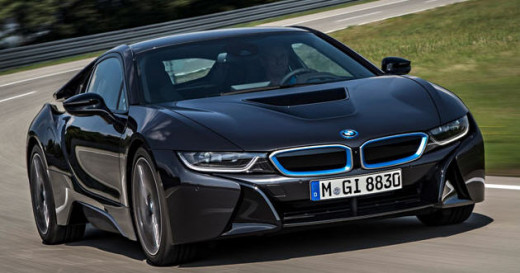
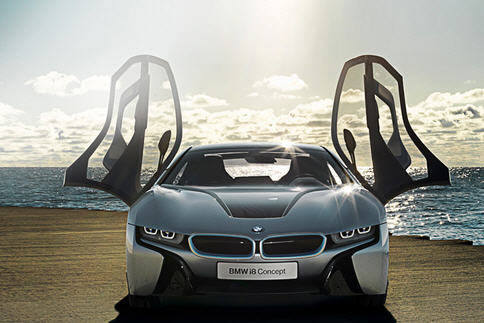
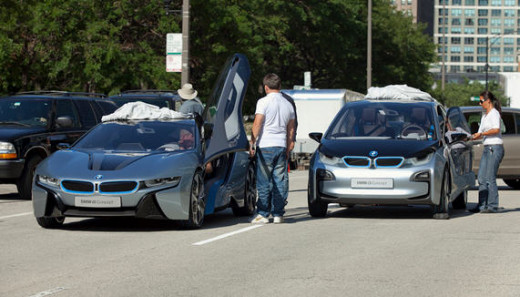
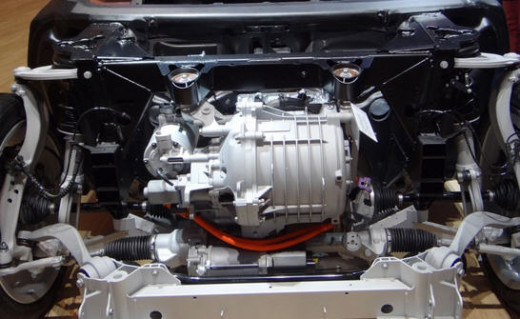
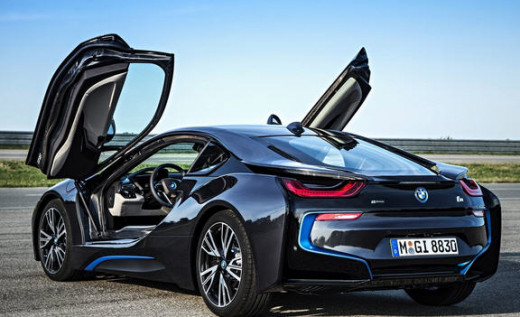
Car design and production is expensive. A lot of time and R&D occurs over years long before the car is made and available to the public. For instance, The 1960 rear engine, air cooled Chevrolet Corvair began in 1956, with the idea and design stages. Because of its aluminum engine, Chevrolet had to built a whole manufacturing plant costing $10 million dollars. Because it was rear engine, the engineers spent over a year in Germany, learning how the Germans built their VW's and Porsche cars. They imported machinery, trained etc. By 1958, they did trial runs, made adjustments, tested manufacturing techniques, etc. By 1960, the first cars appeared in the showrooms for $2000. By 1963, the 1965 Corvair was already being planned with totally redesigned body that would make it famous. Over the 10 year production run, Chevy made around two million cars with average cost of $2500.
The BMW i8 follows the same long and winding road to production in 2014. The car is a design from zero. It has been in design stages for over three years and has an estimated cost in R&D of a whopping $2.77 billion dollars. The car is trying so very hard to be eco-friendly to reduce greenhouse emissions without compromising car performance. The focus and dilemma was to make the car lighter because of its electric batteries. So, BMW designers basically had to redesign how the car is made and what it is made of.
To get a glimpse of the i8, one just needs to see the i3, that went into production in 2013 for $41K. It is made from the same material that the i8 will be made from but has a range of only 81 miles. Its body is carbon fiber reinforced plastic, which is much lighter than metal. All of the car's moving parts are aluminum. The car weighs only 2800 lbs. Compare this to the Mercedes B-class electric with a metal body weighing 3800 lbs. The i3 is 25% less weight. Since weight is critical in an electric car, this is very significant. Light cars require less energy to move them, less wear on parts, accelerate faster etc. For any electric car, the maximum it should weigh is not more than 3400 lbs.
Unlike the i3, the i8 is a midsize car. Its electric engine is the size of a pumpkin producing 184 lbs. of torque into a two speed gearbox. It also has a tiny 1.5L turbo gas engine with 228 hp and a six speed transmission. It has only three cylinders! Between the two engines, there is a liquid cooled battery back of 7 kwh. The amazing thing about three cylinder engine is its performance, a stunning 0-60 mph in 4 seconds, as quick as a Porsche 911! In a quarter mile, it is 12 seconds. The car's total net horsepower is 357, so between the two engines, the car is like a bullet. The car as wing doors and open upwards.
The car will be the first to use carbon fiber body parts in production. There have other specialty cars that have used it, but their production numbers are small, the i8 will be mass produced.While most of the body is polycarbonate, the doors and hood are also covered with aluminum. By using polycarbonate panels for the body, the weight is reduced in half.
The car gets a whopping 50-60 MPG, about the same as a Toyota Prius. The big difference between them is performance. A Prius is like the VW was in the 1960's- slow. The i8 is like a muscle car-zoom.
The really BAD news about the i8 is that it is for the rich. The retail is $136,000. But for that price, you will have a car of the future because of the material it is made from. Of course, one wonders about the maintenance of the car and its cost. Parts will cost a premium. The other negative is that if you plan on just using the electric motor, your range is a mere 23 miles before recharging. So, that actually is quite pathetic.
But, BMW has solved the hybrid problem. Electric motors produce maximum torque at low RPM, while gas engines do so at higher speeds. The carbon fiber body and interior reduced the weight by 50% and have met the EPA standards for 2025 for all American cars made of 54 MPG. All other car makers will have to follow the BMW lead in order to meet the requirements.
The funny thing about the i8 is that America was on the same track in 2002. GM had a concept car in design using similar technology but using hydrogen batteries and aluminum\polycarbonate body, etc. It was called, HY-Wire. For some reason, GM abandoned the project.
I am sure GM is starting the project once again.





